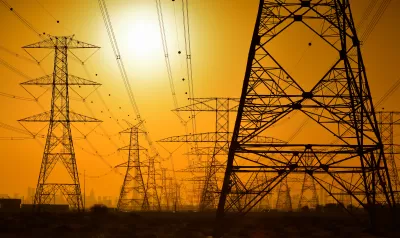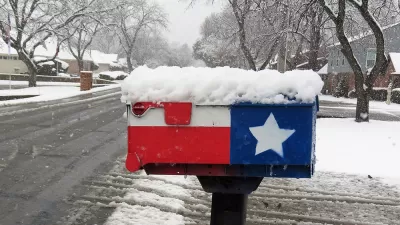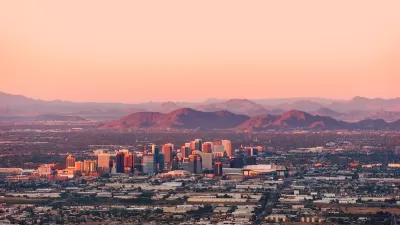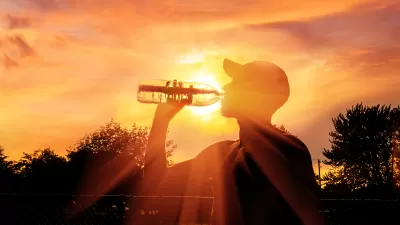As extreme heat becomes more common, the risk of a grid collapse threatens to turn a dangerous situation deadly.

Writing in Wired, Maryn McKenna and Matt Simon describe the risk posed by intensifying heat waves to the electrical grid.
McKenna and Simon note that “For all its faults, the electric grid is surprisingly resilient to heat emergencies.” As the article explains, “The challenge of a heat wave is that a grid has to constantly balance its supply of power and the demand for it.” Utility companies typically address this through importing energy and rolling blackouts when needed. A large operator like Arizona Public Service (APS) in Phoenix, for example, has plans in place to buy power from neighboring states when demand spikes. According to Justin Joiner, VP of resource management at APS, “It's like an airplane—we have multiple redundancies for everything.”
But heat is starting to impact electric grids more and more. “Earlier research by the multi-university 3HEAT Study that modeled the effect of a heat wave plus grid failure on Phoenix (and also Atlanta and Detroit) has found that the risk of urban blackouts lasting at least an hour and affecting at least 50,000 households increased by 151 percent between 2015 and 2021.” Extended blackouts can have lethal consequences, particularly for the elderly, people with chronic conditions, and people with medical devices who need access to constant power.
FULL STORY: A Grid Collapse Would Make a Heat Wave Far Deadlier

Alabama: Trump Terminates Settlements for Black Communities Harmed By Raw Sewage
Trump deemed the landmark civil rights agreement “illegal DEI and environmental justice policy.”

Planetizen Federal Action Tracker
A weekly monitor of how Trump’s orders and actions are impacting planners and planning in America.

The 120 Year Old Tiny Home Villages That Sheltered San Francisco’s Earthquake Refugees
More than a century ago, San Francisco mobilized to house thousands of residents displaced by the 1906 earthquake. Could their strategy offer a model for the present?

LA’s Tree Emergency Goes Beyond Vandalism
After a vandal destroyed dozens of downtown LA trees, Mayor Karen Bass vowed to replace them. Days later, she slashed the city’s tree budget.

Sacramento Leads Nation With Bus-Mounted Bike Lane Enforcement Cameras
The city is the first to use its bus-mounted traffic enforcement system to cite drivers who park or drive in bike lanes.

Seattle Voters Approve Social Housing Referendum
Voters approved a corporate tax to fund the city’s housing authority despite an opposition campaign funded by Amazon and Microsoft.
Urban Design for Planners 1: Software Tools
This six-course series explores essential urban design concepts using open source software and equips planners with the tools they need to participate fully in the urban design process.
Planning for Universal Design
Learn the tools for implementing Universal Design in planning regulations.
Ada County Highway District
Clanton & Associates, Inc.
Jessamine County Fiscal Court
Institute for Housing and Urban Development Studies (IHS)
City of Grandview
Harvard GSD Executive Education
Toledo-Lucas County Plan Commissions
Salt Lake City
NYU Wagner Graduate School of Public Service





























